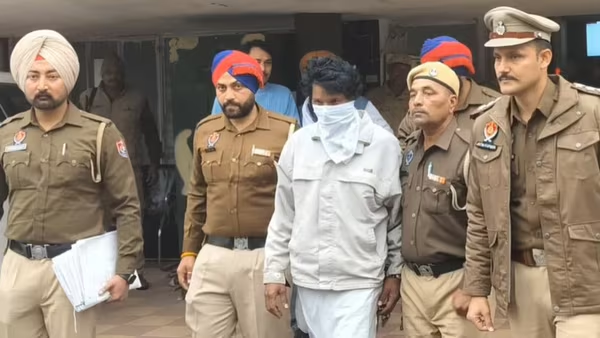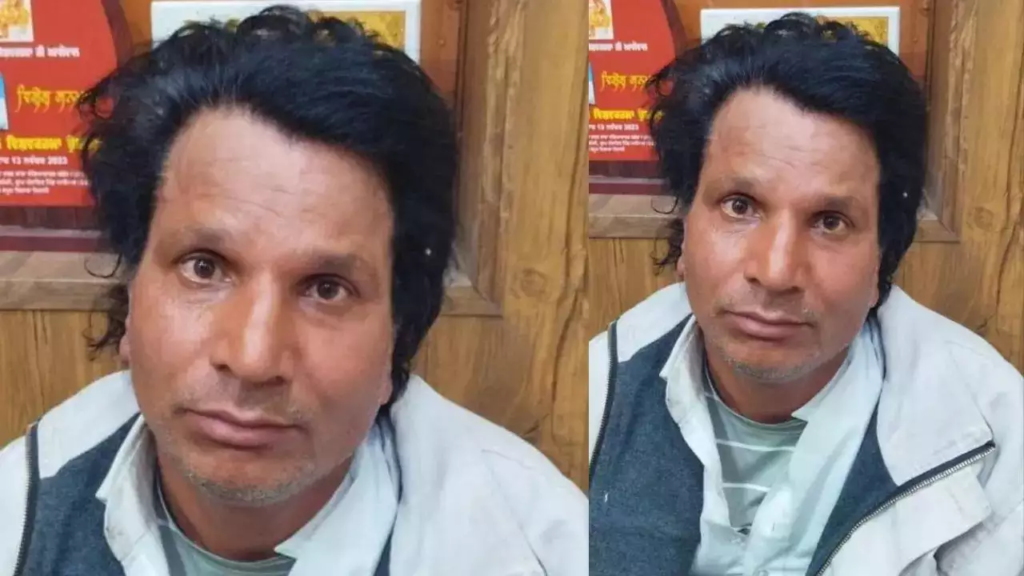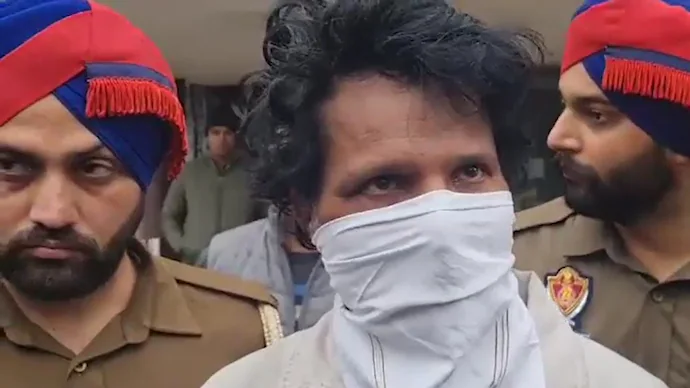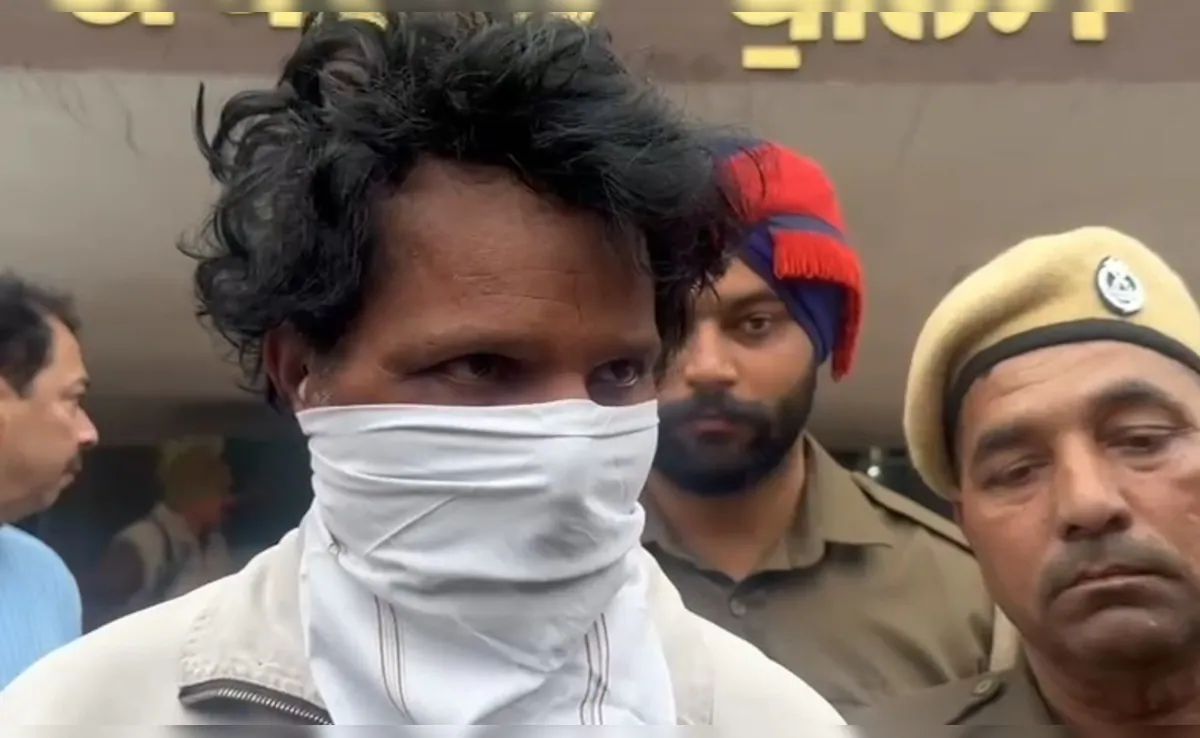Ram Saroop, a 31-year-old man from Chaura village in Hoshiarpur, Punjab, has emerged as one of the most shocking figures in recent criminal history. Over a span of 18 months, he is accused of killing 11 men, leaving a trail of horror that has gripped the nation.
His story is a grim reminder of the consequences of societal rejection, unchecked violence, and the complexity of human motives. The case has not only highlighted the brutality of his crimes but also delved into the psychological and social factors that may have shaped his actions.
The Making of a Serial Killer
Ram Saroop’s descent into criminality appears to have been influenced by a series of personal and social factors. Married with three children, Saroop’s life took a dark turn two years ago when his family abandoned him upon discovering his homosexuality.
In a society where such revelations are often met with ostracism, Saroop found himself isolated and alone. The rejection appears to have triggered a series of events that culminated in his transformation into a cold-blooded killer.
Saroop’s victims were primarily men, and his modus operandi was chillingly consistent. He would lure victims by offering lifts or engaging in sexual acts. If disagreements arose—usually over money—Saroop would resort to violence. Strangulation with cloth was his favored method, though he also used blunt objects like bricks to bludgeon his victims.
Read : Australian Newspapers Write Headlines in Hindi, Punjabi for India-Australia Test Series
One particularly shocking case involved a former soldier working as a security guard. After killing him, Saroop scrawled the word “dhokebaaz” (cheater) on the man’s back, leaving a grim message that further underscored his brutality. This act of writing on the victim’s body added a psychological dimension to his crimes, hinting at unresolved anger and a desire for retribution.
A Trail of Death Across Punjab
Saroop’s murderous spree spanned multiple districts, including Rupnagar, Fatehgarh Sahib, and Hoshiarpur. His victims came from various backgrounds, but the common thread was their tragic encounter with Saroop. The timeline of his killings reveals a disturbing pattern of premeditation and opportunity.
Read : Punjab Panorama: Exploring the State’s Top Tourist Hotspots
One of his victims, Maninder Singh, was a 37-year-old who worked at a toll plaza in Kartarpur Sahib. He was murdered on August 18, and his death is one of the five confirmed cases linked to Saroop. The police are still investigating the remaining murders, piecing together evidence to understand the full extent of his crimes.

The motives behind these killings often revolved around altercations during or after interactions. Saroop’s willingness to kill when faced with resistance or non-payment suggests a level of impulsivity paired with a deep-seated need for control. His choice of victims—largely male and often vulnerable—further reflects his calculated approach to selecting targets.
Arrest and Interrogation
Ram Saroop’s arrest came as a breakthrough for Punjab Police. Initially detained in connection with a murder case in Kirtarpur Sahib, Saroop confessed during interrogation to 10 additional murders. His candid admissions revealed the extent of his crimes and provided crucial details about his methods and motives.
The police investigation uncovered a grim picture of his activities. In many cases, Saroop would offer a ride to unsuspecting men, engage them in conversation, and then attack them when the opportunity arose. His actions were not merely acts of violence but often accompanied by theft, as he sought to rob his victims.

Authorities have so far confirmed five cases, but the investigation is ongoing. The police are working to connect the dots between Saroop’s confessions and unresolved murder cases across the state. A medical examination is also being conducted to determine if Saroop was infected with HIV, given concerns raised during the investigation.
A Reflection on Society and Crime
The case of Ram Saroop raises several troubling questions about societal attitudes, mental health, and the roots of violent behavior. Saroop’s abandonment by his family due to his sexuality underscores the stigma that many LGBTQ+ individuals face, particularly in conservative settings.
While this rejection does not justify his actions, it provides context for understanding the alienation and resentment that may have fueled his crimes.
Moreover, the case highlights the need for greater awareness and intervention in addressing mental health issues. Serial killers often exhibit patterns of behavior that, if identified early, could lead to prevention or treatment. Saroop’s case serves as a reminder of the importance of community vigilance and support systems in mitigating such tragedies.

The brutality of his crimes also sheds light on the dark underbelly of human psychology. The act of writing “dhokebaaz” on a victim’s body reveals a need for expression, perhaps even validation, amidst the violence. This behavior is a chilling reminder of how unresolved emotions can manifest in destructive ways.
Ram Saroop’s story is a harrowing tale of rejection, violence, and loss. His actions have left an indelible mark on the communities affected, and his arrest has brought a sense of relief, albeit one overshadowed by the grim details of his crimes. As the investigation continues, it is hoped that justice will be served for the victims and their families.
This case serves as a stark reminder of the complexities of human behavior and the societal factors that can contribute to such tragedies. It also underscores the importance of fostering a more inclusive and understanding society, where individuals are not driven to such extremes by rejection and isolation.
let’s enjoy few years on earth with peace and happiness….✍🏼🙏

